Tokenisation: A new way of representing assets
Ever since the dawn of time, human beings have hunted and gathered, collecting the things they discovered and making them their own. This was when the concept of ownable assets first emerged, albeit in rudimentary form. Since then, assets have evolved and become more complex as humans have found more reliable ways to connect assets to people.
Today, people enter into legal contracts when transferring assets. If things go wrong, a judge can step in to interpret the situation and decide how to best solve the matter within the legal framework in question. Moreover, property rights give individuals, businesses and governments the confidence to own and use a resource because the law recognises that they own it.
In the 21st century, the format of asset representation is yet again advancing to a new form, known as “tokenisation”, as people search for greater reliability and enhanced opportunities when it comes to representing their assets.
Overview
Tokenisation: a new way of representing assets
While property rights are safeguarded by the law, thereby promoting asset ownership, people use various technologies to represent and format assets in an attempt to link tangible assets to intangible property rights and make this connection visible. Over the course of history, the legal formats people have used when trading or managing their assets have evolved from oral testimony to written documents, through to electronic media. For instance, stock ownership has moved from paper certificates to entries in digital databases. Recently, it has become possible to back up these databases in the cloud, further safeguarding the information that represents a person’s ownership of something.
The change from written documents to electronic formats eliminated the overwhelming workload of having to deal with a large volume of paper-based documents and the potential for loss or destruction, thus improving asset ownership. In the 21st century, the format of asset representation is yet again advancing to a new form, known as “tokenisation”, as people search for greater reliability and enhanced opportunities when it comes to representing their assets.
What is tokenisation, anyway?
Tokenisation is the process of transferring the value of a tangible or intangible asset onto the blockchain – a distributed ledger that records data in blocks. This results in a digital token that is held by the asset owner, thereby representing that ownership on-chain. A digital token can be owned, stored and transferred without the need for intermediaries. Digital tokens are essentially digital units that can represent anything of value on the blockchain. As such, they come with properties, unique asset references and/or legal details attached.
Tokenisation must not be confused with traditional securitisation (a process of pooling illiquid assets together and transforming them into securities). However, it is also possible to create security tokens on the blockchain, which is considered to be one of the great merits of tokenisation.
Blockchain-based tokens have only recently started to play an important role in markets like art and real estate. For instance, non-fungible tokens (NFTs) representing digital art skyrocketed in 2021, selling for millions of dollars. One particular piece of NFT art sold for USD 69 million at the famous auction house Christie’s. Similarly, security tokens with real estate as the underlying asset are gaining in popularity, according to a 2022 report. Other use cases of blockchain-based tokens include:
- Means of payment: Stablecoins are used as a means of payment. Stablecoins are particularly popular because they have lower volatility than cryptocurrencies due to their fiat pegs. As such, they represent the biggest success of tokenised assets so far. For instance, several stablecoins, such as USDT, USDC and BUSD, are pegged to the US dollar. As long as central bank digital currencies (CBDCs) remain widely unavailable, the tokenisation of fiat currencies to create stablecoins is likely to continue, due to ongoing public demand. Furthermore, company loyalty points or meal points may also be tokenised on the blockchain and used as a means of payment.
- Intangible assets: Blockchain-based tokens can represent intangible assets like licences, patents, royalties, trade names, copyrights, goodwill and trademarks.
- Tangible assets: Tangible assets comprise collectible assets such as cars, art and jewellery, precious metals like gold and silver, and real estate. These tokens can also be considered digital twins of real-world assets (RWAs).
- Financial products: Financial products such as certificates, shares, bonds and funds can be tokenised on the blockchain, making them available for on-chain financial products.
It is important to note that tokenised assets are not the same as cryptocurrencies. The latter refers to digital assets like bitcoin or ether that are native to a public blockchain. Consequently, such cryptocurrencies can also be considered digital base money of sorts. Conversely, tokens are built on existing blockchains and their value is tied to the underlying asset if they are connected to a real-world asset. That means when the value of the underlying asset rises, the token price similarly goes up and vice versa. Moreover, an asset-backed token is only a vessel for the underlying asset, meaning the right allocated by the token is based on the asset that the token represents. There are other forms of tokens, like utility or governance tokens, which are not based on an underlying asset but some form of underlying utility or governance function.
When it comes to regulation, different countries follow divergent approaches to regulating tokenised assets. For example, Switzerland’s legal adaptations are selective: they focus on securities law and the use of distributed ledger technologies (DLTs), of which the blockchain is one. Thanks to the recently enacted DLT Act, ledger-based securities (security tokens) have been formally introduced into law. Now, not only can security tokens be legally issued in Switzerland, as uncertified register securities, but they can also be transferred without banks or brokers, unlike traditional securities.
In Liechtenstein, an entirely new law (Token and Trusted Technology Service Provider Act – TVTG) has been drawn up, following the token container model. To understand this model, think of a “container” as a vessel that is typically loaded with goods. The token is, therefore, like a container that can be “loaded” with a right, according to the token container model. This means that transferring a token actually transfers asset ownership rights to another person, just as transferring a container moves the goods it contains along with it. The model also makes it easy to provide partial ownership of assets.
With respect to the European Union (EU), security tokens qualify as financial instruments under the Markets in Financial Instruments Directive II (MiFID II). The upcoming Markets in Crypto Assets (MiCA) legislation, which will come into effect in 2024, does not apply to security tokens. However, utility tokens and stablecoins do fall under the scope of MiCA.
While these two countries and the EU are taking different regulatory approaches in reference to their token economies, they all acknowledge the possible benefits of DLTs. As a case in point, the European Commission believes DLT is a breakthrough technology.
The benefits of representing assets on a universal, shared ledger
While tokenisation is a new way of representing assets on a blockchain, it does come with unique benefits. Most importantly, a public blockchain is an open ledger accessible to anyone located anywhere in the world, at any time. The assets represented on it are more accessible, which enables financial institutions to collaborate with each other, no matter their geographical proximity. As a result, transactions between market participants are likely to be smoother and faster.
As things stand in the traditional world of finance, the market in financial assets still depends on trusted third-party databases, leading to the fragmentation of assets and trading. This trust-dependent and siloed environment, therefore, makes it expensive to reconcile ownership, inhibiting the trading of assets. Moreover, the cost of record-keeping, auditing, reporting and providing legal compliance and opinion across fragmented databases adds up to substantial sums. Mistakes are also likely to occur and accumulate in siloed and trusted environments without anyone noticing. To compound the situation, settlement and clearing delays occur on a daily basis.
In contrast, tokenising assets of all kinds on blockchain technology gives rise to an open, shared environment where trust plays a minimal role, thereby eliminating the siloed conditions present in traditional systems. Other advantages of tokenising on open blockchains are:
- Increased efficiency: Digitising and automating manual work, like the clearance and settlement of securities, saves time and, in turn, enhances efficiency. Europe, for example, is shifting away from paper certificates and embracing electronic records of securities transactions (dematerialised uncertificated securities). Blockchain technology can further facilitate this transition and possibly even significantly reduce the time it takes to make a securities transaction.
- Lower costs: Blockchain technology cuts out unnecessary intermediaries. As a result, costs are likely to drop. Moreover, the involvement of fewer entities enables frictionless transactions, thereby boosting efficiency. Smart contracts, which replace some intermediaries, are capable of minimising the cost of administering and issuing securities.
- Better liquidity: The tokenisation of illiquid assets, like real estate or commodities, can enhance their liquidity. This is also due to fractionalisation – the ability of tokens to represent a fraction of the underlying tokenised asset. By extension, investors can purchase an asset worth millions of dollars for USD 1,000.00 or less, giving them fractional ownership. That also means smaller-scale investors can access assets traditionally beyond their financial reach because of tokenisation. At the same time, assets that would traditionally lie idle can suddenly be financialised and used in new on-chain financial products within the newly emerging field of decentralised finance.
- Higher transparency and security: Open blockchains are highly transparent because the information they record is visible to everyone. This transparency enhances data reliability and makes audits more reliable and potentially easier to carry out. Furthermore, anyone can trace an asset’s history from its original owner to its current one, giving them a sense of security concerning the asset’s legitimacy. While blockchain transparency is positive, blockchain-adjacent technologies, like zero-knowledge proofs, can provide flexibility, making it possible to apply privacy-preserving features where necessary in a business context.
- Improved compliance: Tokens can be programmed to include compliance requirements like know your customer (KYC) and anti-money laundering (AML). Smart contracts can automatically validate the compliance information token holders provide, offering a more efficient approach to enforcing compliance standards.
- A single source of truth: Fragmented databases make it hard and expensive to access information, especially in accurate and up-to-date form. Nonetheless, businesses that come together to share asset data to one blockchain can enjoy higher efficiency and improved data accuracy in a shared context.
When will all this be a reality?
Predictions of tokenisation’s bright future in the financial sector have been around for several years now. So, why has it not taken off yet? There are a number of primary challenges hampering the growth of tokenisation, including:
Blockchain-native issues
The widespread adoption of asset tokenisation requires blockchains capable of high transaction throughputs. So far, no public blockchain has achieved hundreds of thousands of transactions per second or more. This is not an impossible feat, though: the technology just needs time to scale. Some blockchains also struggle with high transaction costs, a challenge that may be solved as innovation continues. This is illustrated by Ethereum, one of the most popular blockchains for tokenising assets. Ethereum is currently characterised by high gas fees, but its rollup-centric roadmap and the upcoming sharding upgrade scheduled for 2023 could bring transaction costs down by minimising network congestion.
The specific blockchain that a particular party chooses for tokenisation will depend on the token’s underlying and what the party’s particular needs are. They may ask themselves the following questions:
- Are decentralisation and transparency important?
- How scalable does the blockchain have to be?
- How much privacy is essential?
- What information is required for the tokenisation process to work?
No matter which blockchain is chosen on the basis of the answers to these questions, it is essential to consider its technical challenges. These may be vulnerable blockchain oracles (systems that feed external data to a blockchain) and unreliable security percussions, which increase the risk of attack. Another potential technical issue is the limited number of end users populating the blockchain network. While it is crucial to answer the above questions, project leads should also scrutinise possible technical issues inherent in their chosen blockchain.
Market-based problems
There are scarcely any secondary markets (e.g. centralised crypto exchanges) for security tokens, and while some decentralised exchanges act as secondary markets for security tokens, their liquidity is shallow and their regulatory standing is unclear. As long as secondary markets remain few in number and low liquidity persists across the board, the tokenisation market will not grow rapidly and be adopted.
After all, the issue of the market for tokenised assets presents a chicken-and-egg problem. Tokenised assets need secondary markets to facilitate trading and build liquidity. However, to build liquidity, they require not only demand but also secondary markets where this demand can find a place to trade. Thus, this inherent dilemma poses a problem and is slowing down the growth of the tokenised asset market.
Regulatory-driven challenges
Last but certainly not least, regulatory uncertainty is a major hurdle preventing the fast growth of tokenised assets. The questions regulators grapple with include the following:
- How can security tokens comply with the legal conditions under capital markets law?
- Who will provide custody for the tokens, as well as the potential underlying assets? Banks could be possible custodians, but most do not currently have the technical abilities to perform this task for tokens, at least. Furthermore, most banks cannot manage token life cycles.
- Is data privacy protection necessary?
- How can tokenised assets comply with existing capital markets regulations?
For the tokenised asset market to expand, modern-day institutions first need to construct conditions that are suitable for tokenised assets. By extension, banks, land registries and other institutions that will be involved in this market must start by improving their capacity to provide the required services so that tokenised assets can enjoy mainstream adoption.
These barriers mean that it will take years for asset tokenisation to really thrive. Every cloud has a silver lining, however: there is the possibility that scalability issues may no longer exist by this point and the industry will have found more regulatory clarity. In the meantime, asset tokenisation projects can start building strong foundations so they can enjoy a first-mover advantage once the market matures.
Share post

Related Posts
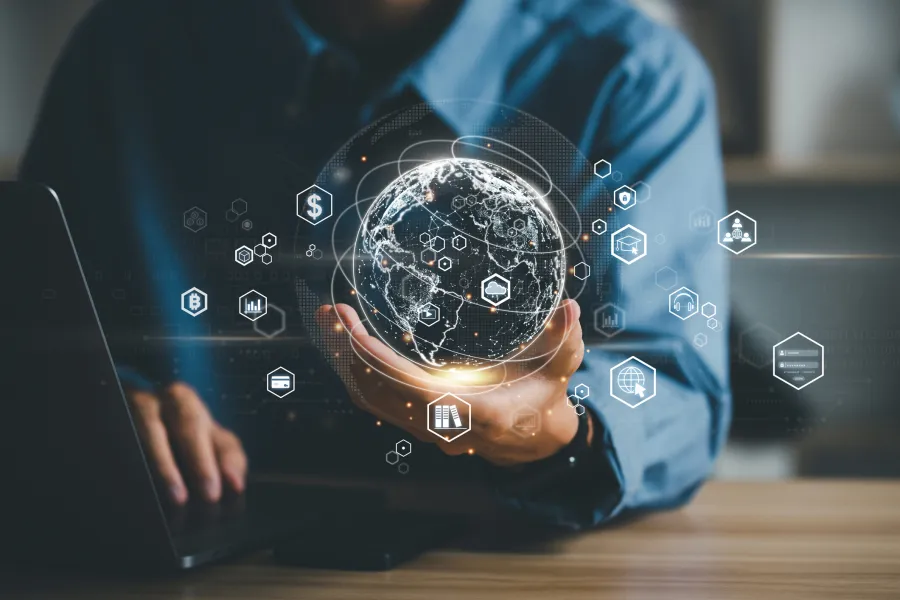
How Blockchain Enables Transparency and Efficiency
Blockchain technology, first demonstrated in 2010 through a historic Bitcoin transaction, has evolved far beyond cryptocurrencies, offering solutions for transparency, efficiency, and decentralization across industries. Its core principles—decentralization, transparency, and immutability—enable secure, peer-to-peer transactions without intermediaries. Innovations like Ethereum's smart contracts have expanded blockchain's capabilities, impacting supply chains, automation, and governance.
Despite concerns about energy use, modern blockchains are increasingly energy-efficient, and misconceptions about complexity or security often stem from misunderstandings. For nonprofits, blockchain offers transformative potential: donations can be transferred quickly, cost-effectively, and transparently, ensuring more funds reach beneficiaries while improving accountability and impact measurement.
As blockchain reshapes societal structures and trust, it presents nonprofits with powerful tools to amplify their impact. Organizations willing to embrace this innovation will be well-positioned to drive meaningful change in an interconnected digital world.

Insights into the process of designing AMCs
Since their introduction, Actively Managed Certificates (AMCs) have become a significant component of the European financial market. As a structured product, legally classified as debt securities, they hold a counterparty risk for the investor that is comparable with other structured financial products. AMCs are securitised, which gives the holder the right to cash repayment or the delivery of an underlying asset. As the buyer, the investor becomes a creditor of the issuer and thus dependent in terms of the type and amount of repayment, which is subject to different parameters.

Direct market access – efficient trade execution for fund strategies
Liechtenstein has a long-standing tradition in the fields of banking and asset management. Since joining the EEA in 1995, Liechtenstein’s financial centre has established itself as a professional point of reference for promoters of collective investment vehicles on the European financial market.
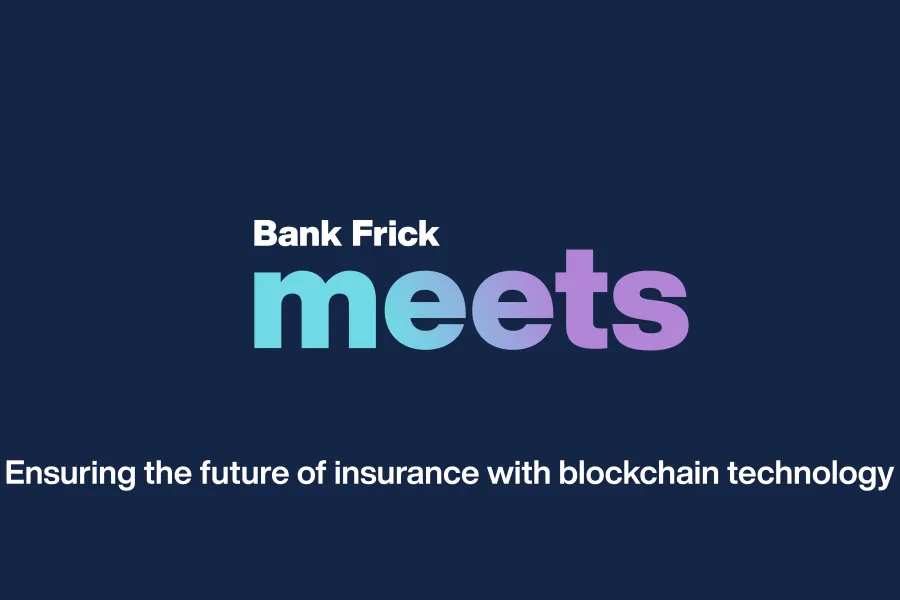
Ensuring the future of insurance with blockchain technology
The insurance market is an essential part of the global economy, covering both personal and business risks. Thus, it is no wonder that it is one of the largest industries in the world, boasting an estimated value of about USD 5 trillion and employing about 2.7 million people across the globe. Out of USD 5 trillion, around USD 3.7 trillion makes up the value of the global life insurance market, while the value of the property and casualty insurance market carries a value of USD 1.3 trillion.
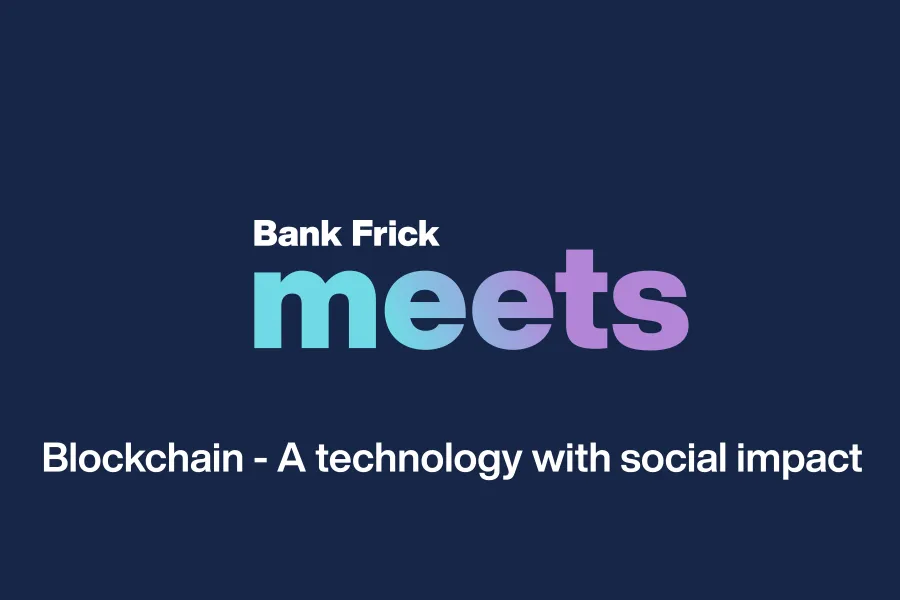
Blockchain: A technology with social impact
Foundational technology is the most effective tool for impacting society at large and solving the challenges it is faced with. One such foundational institutional technology is the blockchain, which entered the picture through the discovery of Bitcoin in 2009 and has since proliferated and emerged in many different forms.
What does blockchain’s social impact look like?
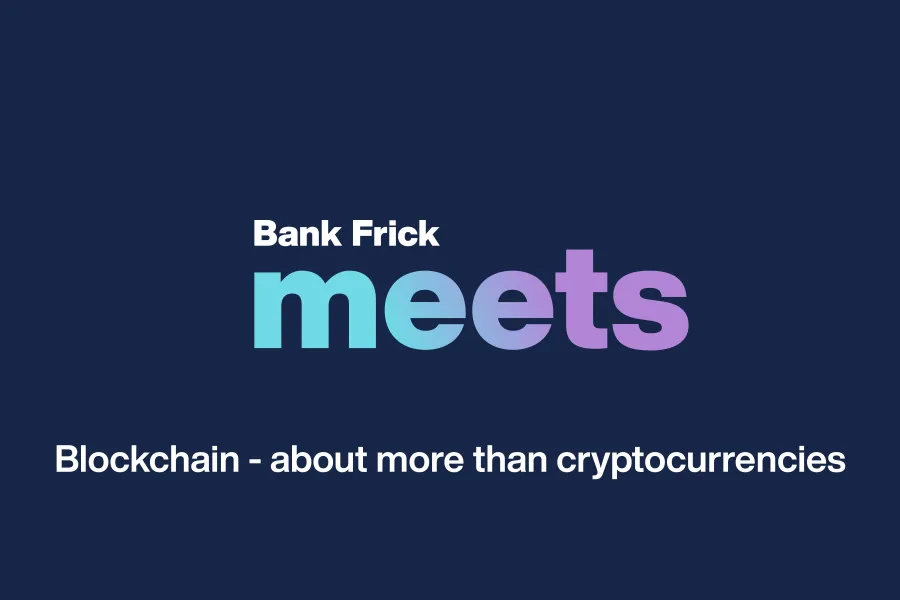
Blockchain - about more than cryptocurrencies
Whether in cybersecurity, supply chain management, new asset classes or insurance solutions, blockchain technology is increasingly being used in areas of the real economy. The boundaries between the classic banking world and blockchain banking are becoming more fluid.
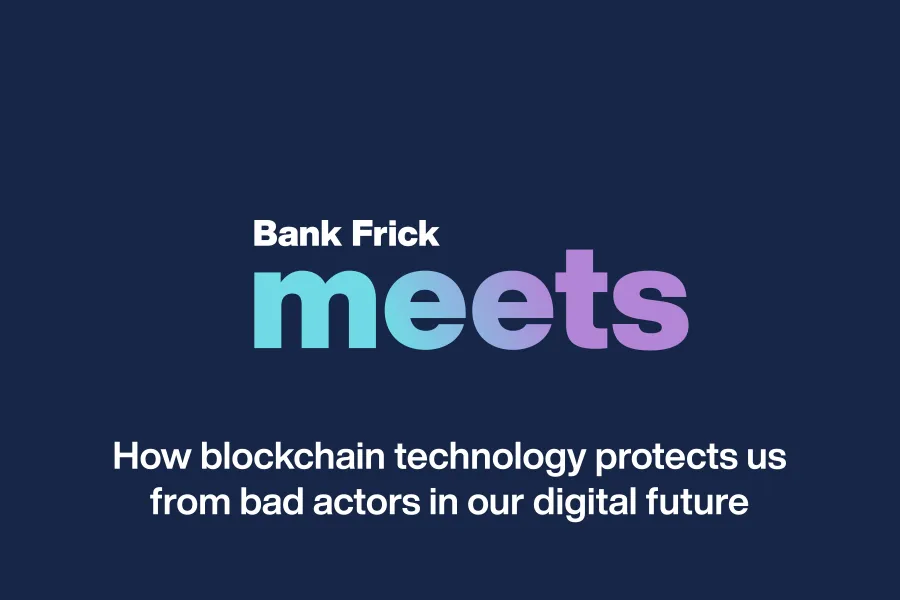
How blockchain technology protects us from bad actors in our digital future
The blockchain industry has experienced significant growth in the last couple of years as one unicorn after another sprouts from the soil that grows crypto start-ups. In this new series of blog posts and webinars, we take a closer look at the technology and explore why it is so successful and why everybody is talking about it. We also look beyond the speculative aspect that blockchain is so frequently associated with and focus on the real-world problems that the technology is poised to solve.

Wie klassische Finanzintermediäre in der Krypto- und Blockchain-Welt Fuss fassen können
Mit zunehmender Selbstverständlichkeit fragen immer mehr Kunden nach Dienstleistungen rund um Kryptowährungen. Für Finanzintermediäre eröffnet diese Nachfrage neue Geschäftsmöglichkeiten. Um das Potenzial heben zu können, müssen die Akteure aber auch das Spezialwissen zur Verfügung haben.
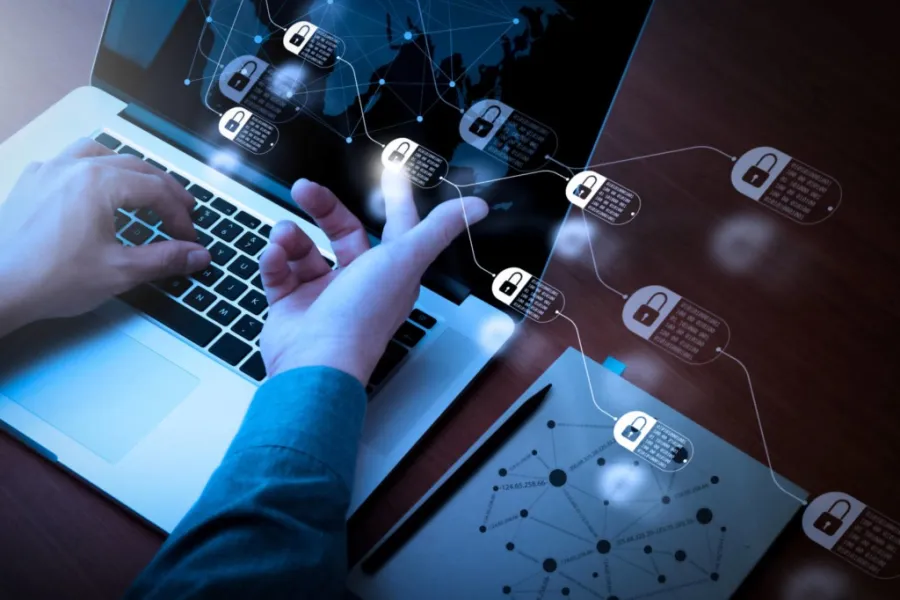
Blockchain technology reinvents correspondent banking – just not yet
As one of its major use cases, blockchain technology is said to transform traditional correspondent banking. So far major challenges have pushed back this transformation. It is more likely than ever that with central bank digital currencies on the horizon; blockchain disruption will finally come to fruition in the realm of cross-border banking.

Turning crypto investment into an earning asset
With Ethereum upgrading to Proof of Stake, the crypto world is going through one of its most transformative shifts to date. This means that customers will soon be able to earn interest on their digital asset holdings through a process called staking. What staking is, how it will define the future of Ethereum and digital asset custody at large is explained in this article.